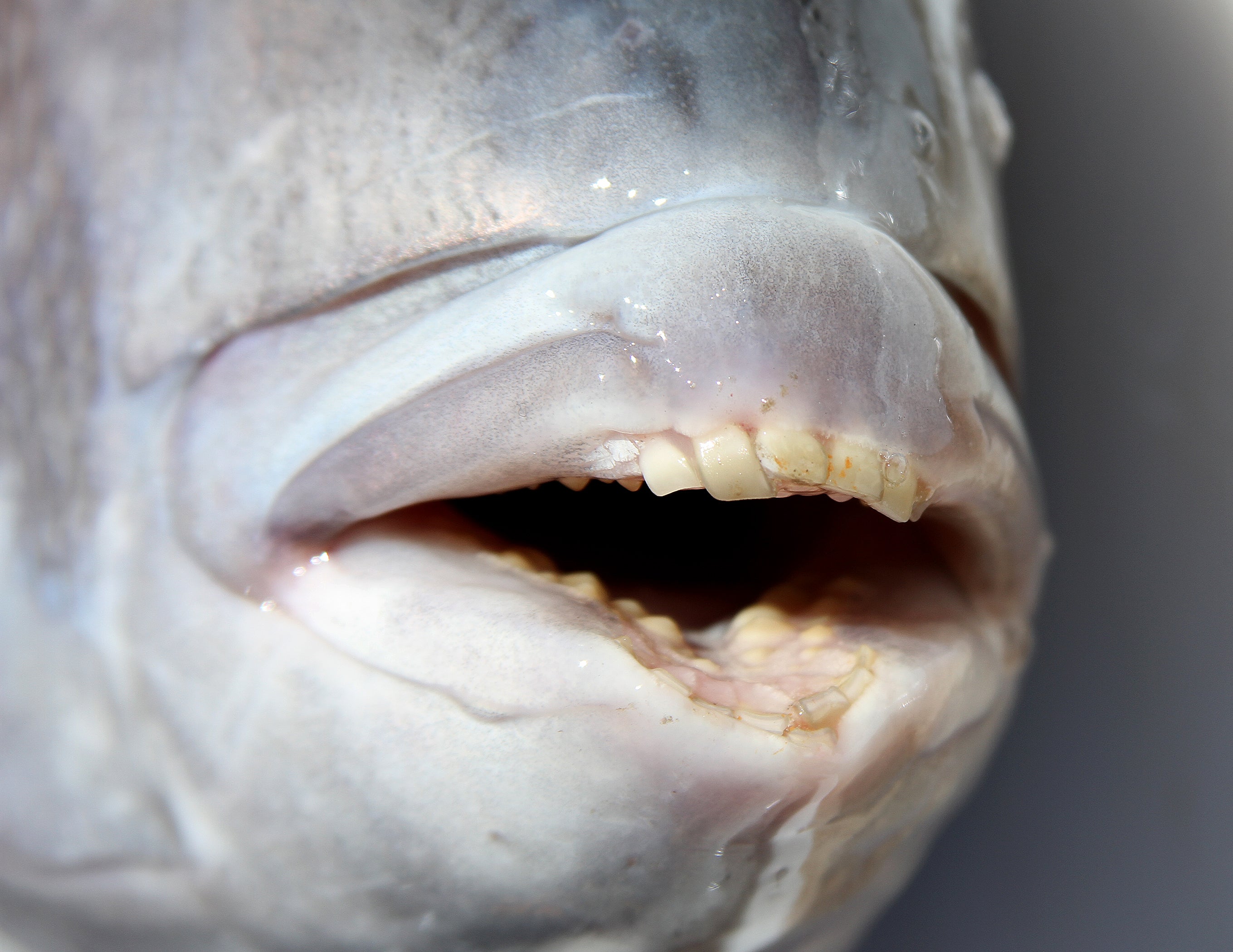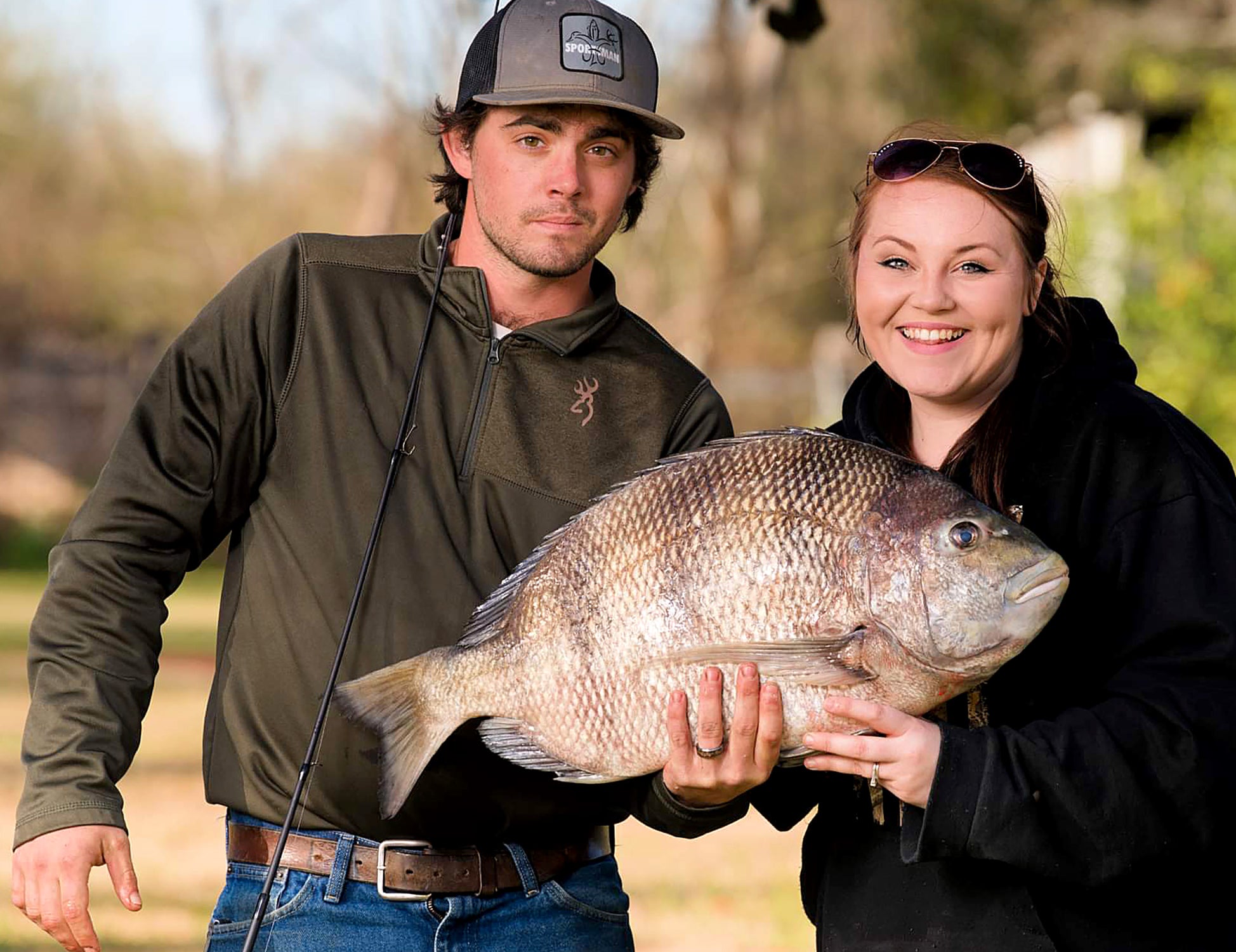By DAVID RAINER, Alabama Department of Conservation and Natural Resources
Anglers, now that deer season is over, it’s time to check that fishing tackle and get ready for a late winter-early spring fishing bonanza with a species that was once relatively overlooked – sheepshead.
Craig Newton, Artificial Reef Coordinator with the Alabama Department of Conservation and Natural Resources’ (ADCNR) Marine Resources Division (MRD), said sheepshead are a great target to shake the dust off the rods and reels.
“The timeline for sheepshead fishing lines up really well with outdoors enthusiasts,” Newton said. “The days are getting longer. You can have nice, pretty days in February. People feel like they can have an easy day on the water, make sure the boat is running good, and they have a good chance to come back with a nice bag of sheepshead fillets when they’re done.”
Newton said during the summer, fall and early winter, sheepshead are spread throughout the estuaries in tidal creeks, on grass flats, around structure, in river channels. In January, the fish will start aggregating in the lower end of the estuaries around deep-water structure, and they will continue that aggregation around nearshore structure in February.
“That’s when they do most of their spawning – in that February through March time period,” he said. “Given the limited amount of structure in the near coastal waters and lower end of the estuaries, they tend to be extremely abundant around the few structures that are there. We’re talking about structures that have barnacles in relatively salty water. They feed on the barnacles and the crustaceans hiding in the structure. You’ll find that type of habitat around the gas rigs. That’s where people typically start fishing for them in the lower end of the bays and nearshore waters.
“The jetties around Perdido Pass are a great place to catch sheepshead. The inshore reefs in Mobile Bay and Mississippi Sound are also great places to catch sheepshead. Also, the Dauphin Island Bridge and Perdido Pass Bridge provide quality sheepshead habitat as well.”
Visit www.outdooralabama.com/artificial-reefs/inshore-reef-zones for more information.
MRD Director Scott Bannon said the sheepshead hotspots can get pretty crowded when the fish are hungry.
“I wish I had a picture of it, but I have seen the boats at Perdido Pass where you could almost jump from boat to boat and walk from one side to the other with people targeting sheepshead,” Bannon said.
The most common tactic for catching sheepshead is to use live shrimp or live fiddler crabs. Before you get ready to head out on the water, make a few phone calls to the local bait shops to find out if they have live bait available.
“Fiddler crabs are my favorite bait,” Newton said. “If you’re quick enough, you can catch your own around the marsh edges, sandy shorelines with marsh grass and rock jetties. Even if you can’t find live bait, they’ll take peeled, fresh dead shrimp also.
“But they are notorious bait thieves. It takes a little bit of practice and a light touch to feel their bites even when they’re feeding during the spawn.”
When you’re sheepshead fishing, if you toss a piece of bait into a promising spot and don’t get a bite within a couple of minutes, you’ve likely been robbed. You might as well reel the hook in and grab another bait.
It’s a good idea to carry plenty of sinkers, leaders and hooks because you are going to lose some tackle when you’re fishing around barnacle-encrusted rocks, pilings or gas platforms. Depending on water clarity, you can start out with 10- or 12-pound-test line, but if you keep getting cut off, you’ll have to go with at least 15-pound-test. Fluorocarbon line also handles the abrasion better than monofilament. When you look at the chompers in a sheepshead mouth, you can see that fine wire hooks are basically useless for these fish. Use strong hooks with a rod capable of muscling the fish away from the structure before you get cut off.








